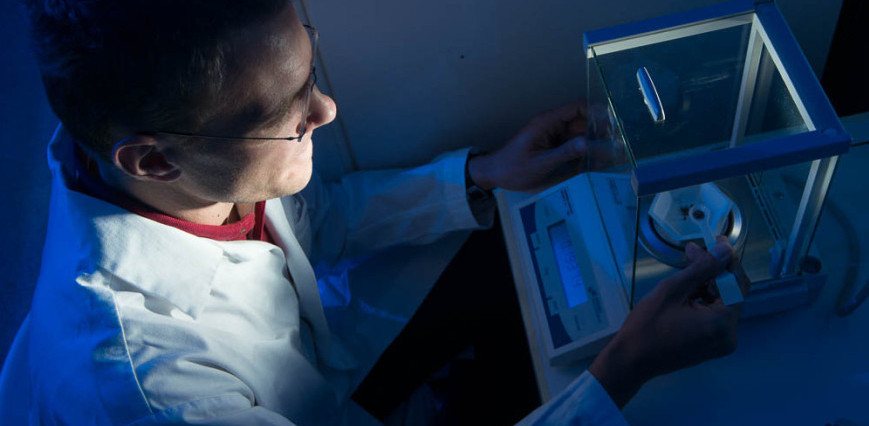
A groundbreaking analysis from Colorado State University shows that radiation levels in food grown near the Fukushima Daiichi Nuclear Power Plant dropped quickly and likely posed minor health risks after the plant’s meltdown and release of radioactive materials four years ago this week.
But the CSU researchers also identified a possible future public health threat that may have been underestimated so far.
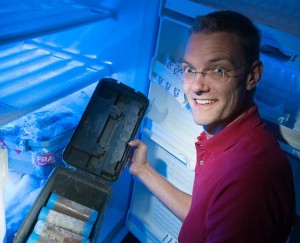
Georg Steinhauser, an assistant professor in CSU’s Department of Environmental and Radiological Health Sciences, co-authored a paper published March 3 by Environmental Science & Technology called “Analysis of Japanese Radionuclide Monitoring Data of Food Before and After the Fukushima Nuclear Accident.”
In it, he and his graduate student Stefan Merz of the Vienna University of Technology in Austria draw conclusions from hundreds of pages of data — detailing more than 900,000 samples — that the Japanese collected on radiation levels in the food supply after the meltdown. A third co-author, Katsumi Shozugawa, who hosted a CSU graduate student at the University of Tokyo last summer, also made key contributions to the project.
Serendipitous discovery
Merz said he was lucky to stumble across the massive amount of information online while searching to validate some previous findings on radiation in the area.
“Looking back, I would say my encounter with the data was something in between coincidental finding at the roadside and a well-planned hunt,” he said. “Although the search was a tough and tiring process, the real work started only after I had found the data.”
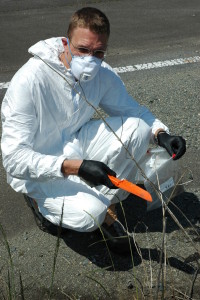
“Initially, I don’t think he realized what a treasure trove this is,” Steinhauser recalled, adding that nothing like this was done after the 1986 nuclear accident at Chernobyl. “It was 20 megabytes of just data – no graphics, just Excel spread sheets. The Japanese were monitoring these things with great effort. I doubt any other country would have been capable of doing it. This was unprecedented in human history.”
The Japanese had collected the readings, but hadn’t analyzed them yet, so Merz and Steinhauser dove into the measurements and discovered that a few months after the accident, only a handful of vegetable samples in the area exceeded regulatory limits for a radionuclide called radiocesium.
“We can conclude that the number of people getting an unacceptably high exposure was probably very, very low,” Steinhauser said.
Japanese response
He added that in the first few months, when radiation levels in local vegetables were high, it’s clear that the Japanese were using their findings to weed out possibly dangerous food before it went to market.
“It was an incredibly successful effort by Japan to gather this and keep the people safe,” Steinhauser said. “The fact that they have this data means they were also acting on it and removing products before they got to the consumer.”
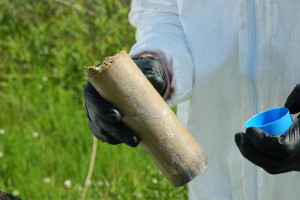
The accident occurred on March 11, 2011. By mid-July, there were a couple of weeks where none of the vegetables that Steinhauser and Merz studied exceeded acceptable radiation limits.
Meat showed a similar pattern, although it took several months for radiocesium to show up in samples because it takes time for animals to eat enough contaminated food to detect a measurable effect. Levels of radiation in cattle spiked during the summer but were below the regulatory safety line by the end of that year.
“I think that this paper provides very important insight regarding radionuclides in Japanese foodstuffs,” said Kathryn Higley, a CSU alum and head of the Department of Nuclear Engineering and Radiation Health Physics at Oregon State University. “Many of the mathematical models that we employ to estimate exposure and dose from radionuclides in foodstuffs are based on the Western diet. This work gives us insight into the relative uptake of radiocesium into food sources that are normally not included in our models.”
A possible threat
The other conclusion from the team’s research concerns a second radioactive material, strontium-90, which Steinhauser said was not included in the Japanese data they analyzed. Scientists have long thought that levels of strontium-90, which is much harder to measure than radiocesium, stay within a 10 percent range of radiocesium.
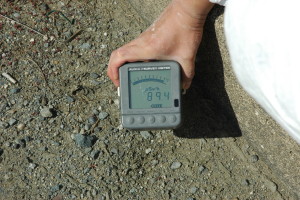
But in perhaps the most striking finding of the study, the team examined old nuclear weapons testing data from the 1950s and 1960s and discovered that while levels of the two substances remain similar initially, over time the amount of Strontium-90 that lives on in the environment is significantly higher than the amount of radiocesium.
Steinhauser said radiocesium is more easily absorbed by minerals in soil and is harder for plants to take in than strontium-90, which is more mobile and readily transmitted into plants for a longer period of time. Their final recommendation in the paper is for the Japanese to begin testing for strontium-90 in food products as well, to monitor its long-term impacts.
“The currently valid regulatory limits in Japan and Europe are based on potentially erroneous assumptions concerning the occurrence of strontium-90 in foodstuffs,” Merz said. “In politics and even in the scientific field of physics this topic may not be very popular; for the sake of human health it was definitely necessary to shed some light on this question. Many scientists in Japan and globally are concerned about the current strontium-90 policy. In our study, we present evidence that this concern is actually quite real.”